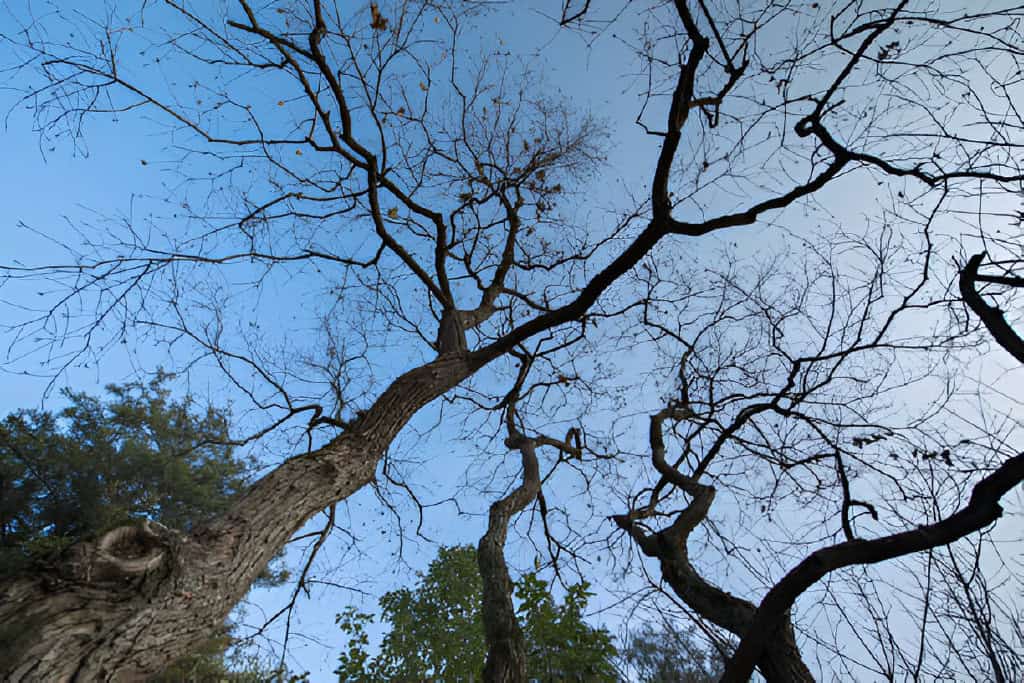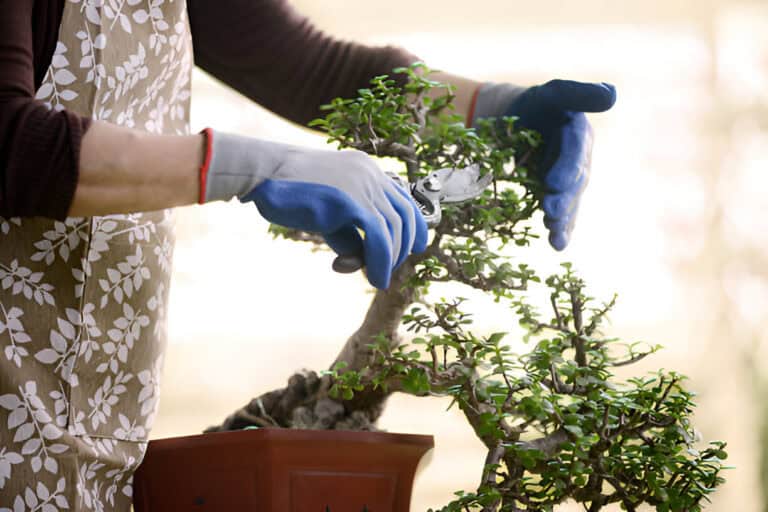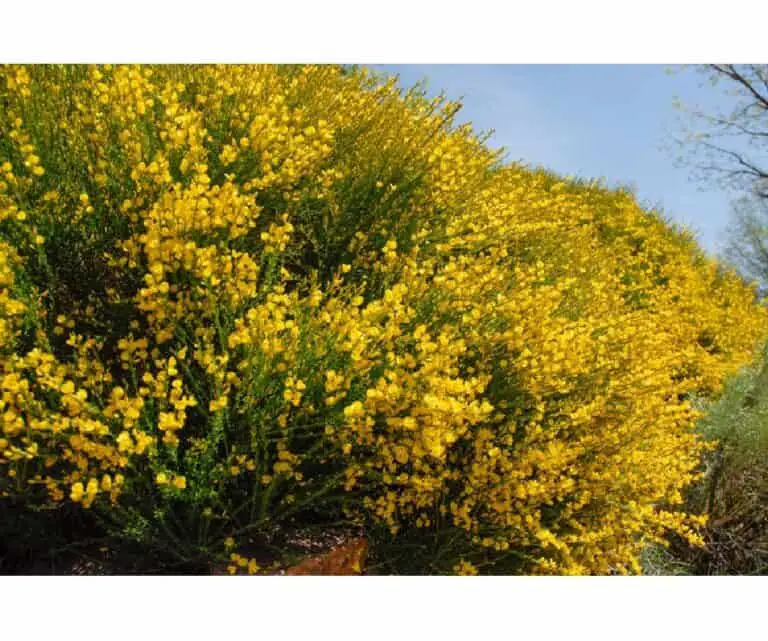Is Your Tree Dead Without Leaves? How to Tell for Sure

Trees, with their towering presence and verdant canopies, are integral to the beauty and health of our environment. But what happens when your tree suddenly sheds its leaves, leaving you wondering if it’s dead?
Determining the vitality of a leafless tree can be challenging, but with careful observation and a few simple tests, you can find out for sure. In this guide, we’ll explore the signs of a dead tree. We’ll also cover how to tell a tree is dormant, not dead. Finally, we’ll cover what steps to take if your tree is dead.
The benefit of reading this article lies in gaining clarity on how to assess the health of leafless trees. You’ll learn practical tricks for telling apart dead trees from dormant ones. This will let you take the right actions to save or remove trees as needed.
Signs That Your Tree Might Be Dead
1. Lack of Leaves
The most obvious sign that something is wrong with your tree is the absence of leaves during a season when it should be lush and green. While it’s normal for deciduous trees to lose their leaves in the fall, they should sprout new ones in the spring. If your tree remains bare during the growing season, it could be a cause for concern.
2. Brittle Branches
Healthy trees have flexible branches that bend without breaking easily. To test this, try snapping a small twig. If it breaks easily and is dry and brittle inside, it could indicate that the tree is dead. In contrast, a living tree will have moist, greenish tissue beneath the bark.
3. Bark Health
Check the tree’s bark for any signs of peeling, cracking, or shedding in large amounts. While some shedding is normal, excessive loss can be a red flag. Additionally, if the bark feels soft or is flaking off in large chunks, it might be a sign of decay or disease.
4. Fungal Growth
The presence of mushrooms or other fungi at the base of the tree can be a strong indicator that the tree is dead or dying. Fungal growth often means internal rot. It weakens the tree’s structure and health.
5. Trunk Damage
Examine the trunk for deep cracks, holes, or wounds. Severe damage can impair the tree’s ability to transport nutrients and water, leading to death. Also, look for signs of insect infestation, which can further weaken the tree.
| Also check: Top 10 Trees that Grow Fast for Lumber and Timber |
Differentiating Between Dormant and Dead Trees
Seasonal Changes
Understanding the natural cycles of your tree species is crucial. Deciduous trees lose their leaves in the fall and regrow them in the spring. Evergreens, on the other hand, retain their foliage year-round but may shed old needles. If a deciduous tree is bare in winter, it’s likely just dormant.
Buds and New Growth
Inspect the branches for buds, which are a good sign of life. Even in dormancy, trees often have buds that will open when the growing season begins. If your tree has no buds or the buds are dry and shriveled, it might be dead.
Scratch Test
Perform a scratch test on the tree’s bark to check for signs of life. Gently scrape away a small section of the bark with your fingernail or a knife. If the underlying layer is green and moist, the tree is still alive. If it’s brown and dry, the tree might be dead.
Table: Signs of Dormant vs. Dead Trees
| Indicator | Dormant Tree | Dead Tree |
| Leaves | Absent in fall/winter | Absent year-round |
| Branch Flexibility | Flexible, don’t snap easily | Brittle, snap easily |
| Bark Condition | Intact, no major shedding | Peeling, flaking off |
| Bud Presence | Present, even if small | Absent or dry and shriveled |
| Scratch Test Result | Green, moist layer beneath | Brown, dry layer beneath |
| Also check: Does Chaga Only Grow on Birch Trees? |
Seek a Professional Arborist to Check if Your Tree Is Dead

Determining whether a tree is dead or alive is crucial for maintaining a safe and healthy landscape. Consulting a certified arborist is the first step towards making an informed decision.
Seek advice from a certified arborist: An arborist specializes in the care and maintenance of trees. They have the expertise to assess the health of your tree accurately. Look for an arborist. They should have certification from the International Society of Arboriculture (ISA). Or, find a reputable tree care company in your area.
Schedule a tree inspection: Arrange for a professional tree inspection to get a precise evaluation. During the inspection, the arborist will examine many indicators. These include leaf condition, bark integrity, and tree structure. These observations provide insights. They show whether the tree is dead, diseased, or maybe salvageable.
Consider options for removal or treatment: Based on the arborist’s assessment, discuss the next steps. If the tree is dead or severely compromised, removal might be necessary to prevent safety hazards or property damage. Alternatively, if there’s a chance to revive the tree with proper care, the arborist can recommend suitable treatment.
Table: Steps to Determine Tree Health
| Step | Description |
| Seek advice from a certified arborist | Consult an expert for professional guidance on tree health. |
| Schedule a tree inspection | Arrange for a thorough evaluation to determine the tree’s condition. |
| Consider options for removal or treatment | Decide on appropriate actions based on the arborist’s assessment. |
By following these steps and consulting a certified arborist, you ensure that your trees receive the best care possible, promoting a safe and thriving landscape.
Steps to Take If Your Tree Is Dead
Confirming the Diagnosis
Before taking any drastic measures, it’s important to confirm that your tree is indeed dead. As already mentioned previously, consult a certified arborist if you’re unsure. They can provide a professional assessment and confirm whether the tree is beyond saving.
Removal Process

If the tree is confirmed dead, removal might be necessary, especially if it poses a safety hazard. Here’s a brief guide on how to proceed:
- Safety First: Ensure the area around the tree is clear and free of obstacles. Use protective gear.
- Professional Help: Hire a professional tree removal service if the tree is large or located near structures.
- DIY Approach: For smaller trees, you can cut the tree down yourself. Start by removing the branches, then cut the trunk into sections.
- Stump Removal: Decide whether to remove the stump. You can grind it down, dig it out, or let it decay naturally.
Environmental Considerations
Dead trees can still play a role in the ecosystem. Consider leaving part of the tree or stump to serve as a habitat for wildlife. If removing the tree entirely, consider replanting with a new tree to maintain the ecological balance.
Preventing Future Issues
To avoid future tree deaths, ensure you provide proper care and maintenance:
- Watering: Provide adequate water, especially during dry periods.
- Mulching: Apply mulch around the base to retain moisture and regulate soil temperature.
- Pruning: Regularly prune to remove dead or diseased branches.
- Fertilizing: Use appropriate fertilizers to ensure the tree receives necessary nutrients.
Conclusion
Determining whether a tree is dead without leaves involves careful observation and a few simple tests. While the lack of foliage can be alarming, understanding the signs of dormancy versus death is crucial. You can often determine the tree’s health by doing a scratch test, inspecting buds, and checking branch flexibility. If you confirm that your tree is dead, take appropriate steps to remove it safely and consider environmental impacts.
Regular tree care and maintenance can prevent many issues, ensuring your trees remain healthy and vibrant. You can choose to replace a dead tree or leave it to help the local ecosystem. But, you need to understand the signs and care techniques. This is key for any tree owner. With this knowledge, you can maintain a beautiful and healthy landscape, contributing to a greener environment for all.






